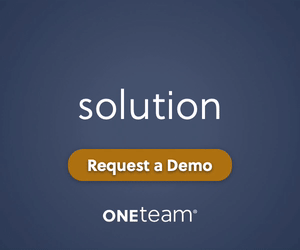Transitioning from journalism to proposal management proved simpler than I had first anticipated.
Six years ago, I had a job interview with my would-be manager, also a fellow former journalist, in which she explained how developing a proposal was similar to putting together a daily newspaper, my previous gig.
Of course, there would be deadlines (not quite “file your 20-inch state championship story in the next hour” deadlines, but in some ways even more difficult). Similarly, there would be page design. Interviewing subject-matter experts, certainly. Analyzing an RFQ/P for requirements and minutiae was like reviewing court documents for an investigative piece.
Over the years, the skills I learned from working as a sports reporter for a daily newspaper, combined with APMP best practices, have shaped my approach to proposal management. To streamline my move from print journalism, I found parallels where I could treat proposal management like a reporter on the beat.
What Is a Beat?
Beat journalists focus their coverage on a single topic or arena, such as politics, sports or food. Within these topics, there can be even more delineation: You might be a political journalist who focuses on government at the state level or a sportswriter who covers one specific WNBA team.
Key to beat journalism is cultivating relationships and sources, as well as learning all there is to know about a beat. Here is an in-depth look at these beat journalism basics to consider implementing in your proposal management approach.
Develop Your Sources
Journalists are always on the lookout to develop relationships with people who can give them the scoop.
Similarly, in proposal management, we reach out to department leads, project managers and other sources for data that changes frequently or project-specific proofs and stories to tailor your response to a client. The key is cultivating relationships with the people who are your gatekeepers to information.
But do you only talk to your sources when you need something? Don’t be a stranger, recommends Poynter Institute, a nonprofit journalism school and research organization, and your sources will be more likely to be more responsive to your request, and even offer something without you asking. Regularly check in with your contacts, even if it’s a simple “good morning” or asking how they are since the last time you talked.
Following your request, how do you thank those who assist you? In addition to a follow-up email or call, you might share with your source the outcome of what they provided. If possible, send them a paragraph you developed or a graphic that made it into the proposal. Show your sources tangible examples of how they helped you, and they will be more likely to think of the proposal department first when new and interesting data, client testimonials or project photos come their way.
Rarely do reporters have a degree or firsthand experience in the field they cover. Instead, they expand their knowledge by researching, analyzing, questioning and learning everything about their particular beat. When journalists learn more about their beats, they ask better questions of their sources and get a more rounded sense of the story as an informed and curious professional.
In the same way, becoming a proposal management expert means consuming what you can about the craft. Look into webinars and classes for proposal management best practices or consider earning your APMP certification. Listen to podcasts or sign up for updates from trade websites such as WinningtheBusiness.com or PropLibrary. You can even find your local meet-up group of proposal management professionals — shout-out to the Denver Proposal Managers and the Carolinas APMP chapter — to see what you can glean from another market sector or industry.
This constant learning also includes internal processes such as holding debriefs, requesting competitor proposals, or even consistently managing proposals for a particular client or sector. Every opportunity to learn will further hone your skills and value as a proposal manager. It gives you a deeper perspective on the trends in RFQ/P processes and allows you to dive into your expert niche.
Learn About Other Beats
Journalists gain even more insight when they go beyond their beat to understand other beats or topics adjacent to their own. For proposal managers, our expertise lies not only in managing the process, but also in bringing a more expansive look to the technical material to see gaps or make connections.
Often, we can see more clearly a missing benefit in a proposal than the SMEs deep in the weeds developing the approach. Staying up-to-date on trends, technology and news about the industries in which we work can add to this understanding.
For example, even if I don’t grasp the minutiae of the technical aspects, simply listening to a webinar on segmental bridge construction or building information modeling gives me a baseline understanding of terminology, concerns and value about those topics related to the A/E/C industry in which I work. When I manage the next proposal, I am better able to guide the conversation at kickoff around strategy to win or pinpoint additional differentiators because I spent time in the world of the language of my SMEs.
When a sports reporter walks onto a basketball court, and the coach knows she owns that beat — that she is a trusted, respected reporter — she gets the information she needs to craft her story for tomorrow’s paper. The work of the proposal manager is no different; at the heart of the proposal management beat is building relationships. When you establish trust with your sources and within your team as an expert, you are better equipped to develop and execute successful, responsive proposals together.
Ashley Teatum, CF APMP, a senior proposal manager at Flatiron, has been working in the construction industry since 2014. Before that, she covered high school sports, including soccer, wrestling and volleyball, as a reporter for The Times-Tribune. Connect with her on LinkedIn.




Join the Conversation